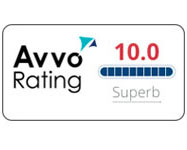The Employee Retirement Income Security Act (ERISA) does not prescribe a statute of limitations applicable to lawsuits to recover benefits. Generally, the analogous state statute of limitations applies. However, a benefit plan may impose a different statute of limitations within the terms of the plan provided that the period is reasonable.
In Mirza v. Insurance Administrator of America, Inc. No. 13-3535 August 26, 2015, the Third Circuit Court of Appeals held that the notice of a denial of a benefit must include information about the time limits applicable to both the plan appeal procedures and the claimant’s right to bring a civil action in court. The limitations period provision was buried on page 73 of Insurance Administrator of America’s 91 page governing plan document.
To reach its conclusion, the Court interpreted the text of the Department of Labor’s regulations governing claim procedures, 29 C.F.R. §2560.503-(g)(1)(iv). To comply with the regulations, a notice of benefit determination must provide a “description of the plan’s review procedures and the time limits applicable to such procedures, including a statement of the claimant’s right to bring a civil action under section 502(a) of the Act [ERISA] following an adverse benefit determination on review.” “Including” encompasses the time limits to bring a civil action as well as the time limits to file a plan appeal. Plan administrators have a light burden, “trivial” in the words of the Court, to inform claimants of deadlines for judicial review in the adverse benefit determination.
Notice of ERISA Limitations Period
Unable to Work in Regular Occupation – Long Term Disability Insurance
Most long term disability insurance policies have a two-tiered definition of disability. During the initial period, typically two years, the policy defines “disability” as an inability to perform the material and substantial duties of the insured’s regular occupation because of a medical condition. While the language varies somewhat from plan to plan, a definition requiring an inability to perform duties of the claimant’s regular occupation triggers the need for a vocational analysis as well as a medical analysis. The insurer must assess the claimant’s ability to perform the claimant’s regular occupational requirements in light of the diagnosis. The decision should explain how medical symptoms impact responsibilities to perform the actual occupational requirements on a regular basis.
Eligibility for disability benefits depends upon the precise language of the policy or plan. Plans may contain a detailed description of the scope of the occupation. For example, a plan insuring a physician may define the regular occupation as a particular recognized specialty, rather than the more general occupation of “physician”. Eligibility criteria frequently require a prescribed loss of pre-disability earnings due to sickness or injury.
In the claim and plan appeal process, the claimant should submit evidence of the physical and mental functions required to successfully work in the claimant’s regular occupation as well as evidence of any loss of earnings. O*Net online, www.onetcenter.org, is a valuable database of the knowledge, skills and abilities required to engage in listed occupations.
The particular provisions of the entire insurance policy or plan must be applied to each particular claim. The entitlement to benefits ultimately requires medical and vocational evidence demonstrating that the claimant fulfills all the eligibility factors in the policy providing coverage.








